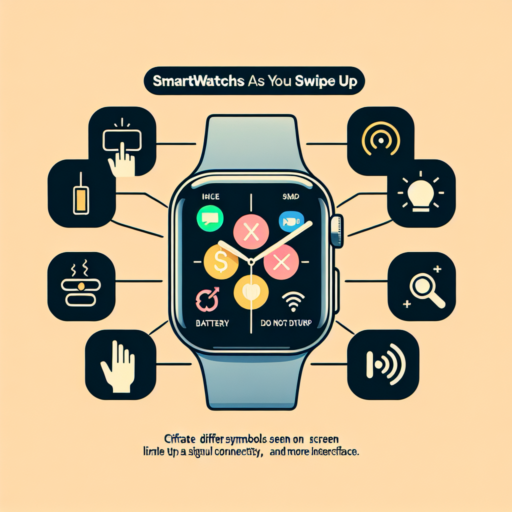How do I know my band size for my Apple Watch?
Finding the perfect band size for your Apple Watch is crucial to ensure comfort and style. The process to determine your band size is straightforward, but often overlooked by many users. Before you begin, make sure you have a measuring tape at hand for an accurate measurement.
Firstly, to measure your wrist, wrap the measuring tape around your wrist where you would normally wear your watch. Make sure the tape is snug but not too tight, as the band will sit comfortably without being restrictive. Record the measurement and compare it with Apple’s band size chart, available on their official website. It’s important to note that Apple offers bands in various sizes, making it easy for everyone to find their perfect fit.
Another factor to consider is the band type. Different band types might fit differently even if they are labeled as the same size. For instance, the Sport Band and the Milanese Loop have different fitting guides. Therefore, reviewing the specific sizing guide for the type of band you are interested in is advisable.
No se han encontrado productos.
What size Apple Watch strap should I get?
Choosing the right size for your Apple Watch strap is essential for comfort and functionality. Apple provides a range of strap sizes to accommodate various wrist sizes, ensuring that users can find the perfect fit. The decision on what size Apple Watch strap you should get depends on two main factors: the case size of your Apple Watch and the circumference of your wrist.
Understanding Apple Watch Case Sizes
The first step in selecting the right Apple Watch strap is to know the case size of your Apple Watch. Apple Watches come in different case sizes such as 38mm, 40mm, 41mm, 42mm, 44mm, and 45mm. The straps are made to fit these specific case sizes. For example, if you have a 40mm Apple Watch, you’ll need to select a strap designed for either the 38mm or 40mm models, as they are interchangeable.
Measuring Your Wrist
Once you know your Apple Watch’s case size, the next step is to measure your wrist. Use a flexible measuring tape, and wrap it around your wrist where you would normally wear your watch. If your wrist circumference is between 130-200mm, you would typically fit into the standard strap sizes offered by Apple. However, for wrists smaller than 130mm or larger than 200mm, you might need to look for alternative straps designed for a more comfortable fit.
To ensure precision, you might consider visiting an Apple Store or an authorized retailer where you can try on different strap sizes. This can help you feel the fit before making a purchase. Remember, the right strap size not only adds to the aesthetic appeal of your Apple Watch but also ensures that the sensors maintain proper contact with your skin for accurate activity and health tracking.
How do I know my Apple Watch size?
Determining the size of your Apple Watch is crucial for both comfort and functionality. Apple provides a range of sizes that cater to different wrist sizes, ensuring that there’s a perfect fit for everyone. Knowing your Apple Watch size can enhance your experience, whether it’s for daily wear or fitness activities.
Check Your Watch’s Series and Model
Firstly, identifying your Apple Watch series and model is a stepping stone to knowing its size. Apple Watches come in various series, and each series offers models in different case sizes typically measured in millimeters. You can find this information by looking at the back of your Apple Watch, where the case size, series, and model are engraved.
Measure Your Wrist
Another method to determine the suitable Apple Watch size for you is by measuring your wrist. Use a flexible tape measure to wrap around your wrist at the area where you’d normally wear a watch. If you don’t have a tape measure, a strip of paper can be used instead—mark where the end meets and then lay the paper flat next to a ruler to measure the length. This measurement can help you decide between Apple’s offered sizes, choosing one that ensures a snug, yet comfortable fit.
It’s essential to remember that comfort and personal preference play significant roles in selecting the right Apple Watch size. Whether you prefer a larger display for easier interaction and reading or a smaller, subtler size, the choice is yours. By identifying your watch’s series and model and measuring your wrist, you’re already on the right path to finding the perfect Apple Watch size for your needs.
How do I know if my Apple Watch is 40 or 44?
Determining the size of your Apple Watch, whether it’s a 40mm or 44mm model, can influence your experience with the device, from how it fits on your wrist to selecting compatible bands and accessories. If you’re unsure about your Apple Watch size, there are straightforward strategies you can employ to find out.
Check the Engravings on the Back of Your Watch
One reliable method to determine the size of your Apple Watch is to inspect the engravings on the back of the device. Apple smartly includes the case size, in millimeters, right next to the model number. Gently remove the band on either side of your Apple Watch to reveal these details. Looking closely, you should find the information etched directly below the Apple logo, specifying either 40mm or 44mm, which represents the vertical height of the watch case.
Use the Apple Watch App on Your iPhone
Another method involves utilizing the Apple Watch app on your paired iPhone. Launch the app, and navigate to the ‘My Watch’ tab, then tap ‘General’ followed by ‘About’. Here, you’ll find a list of details about your watch, including the model. While the app won’t outright display «40mm» or «44mm», you can quickly reference the model number online or through Apple’s support documentation to determine your watch’s size. This method is particularly useful if you’re unable to directly inspect the watch itself or prefer a digital confirmation.
Whether you’re confirming the case size for accessory compatibility, personal preference, or ergonomic considerations, identifying whether your Apple Watch is 40mm or 44mm is a simple process. By either examining the watch’s physical characteristics or utilizing digital resources, you can confidently ascertain the specifications of your device.




